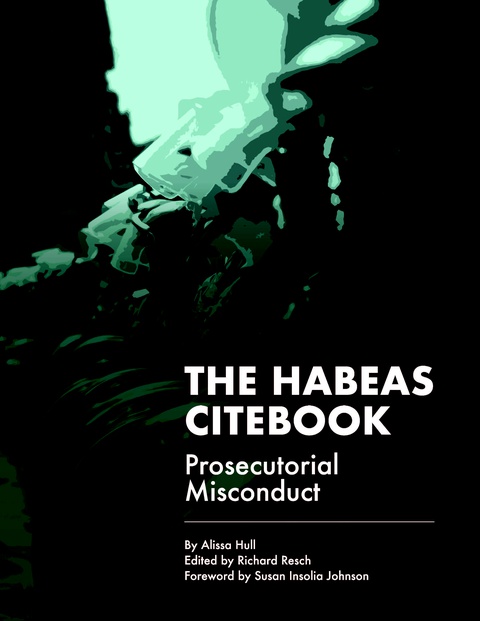Illinois Supreme Court Announces Conviction for Attempted First Degree Murder Requires ‘Intent to Kill Without Lawful Justification
The Supreme Court of Illinois held that a conviction for attempted first degree murder requires proof that the defendant acted with the intent to kill without lawful justification, rejecting the notion that intent to kill alone is sufficient. Because the jury instruction omitted this element and the jury’s finding of a mitigating factor for imperfect self-defense in the second degree murder verdict negated the requisite intent for attempted murder, the Court affirmed the reversal of the attempted murder conviction.
Background
The charges against Travaris T. Guy stemmed from a shooting incident on November 1, 2002, at the intersection of North Midland Avenue and West Jefferson Street in Joliet, Illinois. Guy, a passenger in a Chevrolet Malibu driven by Corzell Cole, encountered a van occupied by four members of the Woods family: (1) David Woods Sr. in the driver’s seat, (2) his nephew David L. Woods in the front passenger seat, (3) his daughter Sheena Woods in the back seat behind the driver, and (4) Constance Daniels, David L. Woods’ girlfriend, in the back seat behind him. Testimony established a longstanding feud between the Guy and Woods families, with each side presenting evidence portraying the other as the aggressor.
Witnesses in the van testified that Constance recognized Cole and Guy and alerted the others by saying, “there they go.” According to Constance, Guy began shooting before David Sr. noticed them. Sheena recounted that David Sr., whose window was inoperable, opened his door to look, at which point Guy fired. David Sr. fell backward into the van, bleeding from his shoulder and mouth, and Sheena was struck by gunfire. All occupants of the van claimed that no one in the vehicle possessed a firearm.
Guy testified that he had received a gun from his cousin Ronald Guy the previous day, October 31, 2002, after Ronald warned him of threats from the Woods family due to their feud. Ronald informed Guy that the Woods family intended to target him because they knew where Guy’s girlfriend lived nearby. On the day of the incident, Guy observed David Sr. appearing angry, opening his door, and holding a silver gun. Believing he was about to be shot, Guy ducked and fired shots before Cole drove away.
It was undisputed that Guy’s shots killed David Sr. and injured Sheena. Guy was charged with three felony counts in connection with the shooting. Counts I and II were for first degree murder in connection with David Sr., and Count III was for the attempted first degree murder of Sheena.
Procedural History
Guy’s jury trial began on April 5, 2005. The jury received instructions for attempted first degree murder requiring proof that Guy performed a substantial step toward killing an individual, did so with intent to kill, and was not justified in using the force employed. This was taken from Illinois Pattern Jury Instructions. Over the State’s objection, the jury was also instructed on the lesser-included offense of aggravated battery with a firearm. For first degree murder, instructions specified that the offense occurs when a person kills without lawful justification with intent to kill or do great bodily harm, or knowing such acts create a strong probability of death or great bodily harm. A mitigating factor reducing first degree murder to second degree murder was defined as the defendant’s unreasonable belief in circumstances justifying deadly force.
During deliberations, the jury posed two questions: one clarifying the counts, to which the trial court responded that there were three counts merging into verdict forms; and another asking whom the attempted murder targeted, to which the court referred them to the instructions over defense objection.
The jury convicted Guy of second degree murder for David Sr.’s death, determining he believed circumstances justified deadly force but that belief was unreasonable, and of attempted first degree murder for Sheena, determining intent to kill without justification. Posttrial motions challenged the verdicts as inconsistent and the attempted murder instruction as improper, but the circuit court denied them without comment. Guy received consecutive 30-year sentences.
He did not raise the issues of inconsistent verdicts or instructional error on direct appeal or in his initial postconviction petition, which was dismissed at the first stage. On February 20, 2020, Guy filed a successive postconviction petition claiming inconsistent verdicts, arguing the second degree murder finding negated intent for attempted murder and asserting a trial court error in responding to jury questions. A supplement alleged ineffective assistance by direct appeal counsel. Attachments included letters from appeal counsel advising against challenging the attempted murder conviction and suggesting focus on new issues in postconviction proceedings.
At the second stage, the circuit court dismissed most claims but advanced the jury question issue to a third-stage hearing, where it vacated the attempted murder conviction and ordered a new trial, citing concerns over the conviction’s integrity. Both parties appealed: Guy from dismissals, the State from vacatur.
The appellate court reversed the attempted murder conviction outright, ruling direct appeal counsel was ineffective for not raising inconsistent verdicts or instructional error, and postconviction counsel deficient for not amending to include instructional error. On the merits, it held the instruction misstated the law by requiring only intent to kill, deemed verdicts inconsistent, and concluded outright reversal appropriate because the self-defense belief precluded guilt.
Analysis
The Court began by stating that the “substantive issue in this appeal is which intent must the State prove in an attempted first degree murder case: (1) intent to kill or (2) intent to kill without lawful justification.”
The Court started its analysis by interpreting the Criminal Code of 2012, emphasizing that statutory language provides the best indication of legislative intent. Murray v. Chicago Youth Center, 864 N.E.2d 176 (Ill. 2007). It observed that the attempt statute requires intent to commit a specific offense coupled with a substantial step toward its commission. The Court observed that specific-intent crimes require proof the defendant subjectively desired the prohibited result. People v. Grayer, 237 N.E.3d 442 (Ill. 2023).
Focusing on first degree murder, 720 ILCS 5/9-1(a) defines it as killing without lawful justification with intent to kill or do great bodily harm, or knowing acts create a strong probability of such. The Court examined several cases on the requisite intent for attempted murder. It discussed People v. Trinkle, 369 N.E.2d 888 (Ill. 1977), in which the Supreme Court held attempted murder requires intent to kill, invalidating instructions permitting conviction based on knowledge of strong probability of harm. Similarly, in People v. Harris, 377 N.E.2d 28 (Ill. 1978), the Supreme Court stressed that nothing less than criminal intent to kill suffices.
The Court also discussed People v. Barker, 415 N.E.2d 404 (Ill. 1980), upholding an indictment alleging intent to commit murder by acts constituting a substantial step, deeming “intent to kill” redundant since one cannot intend murder without intending to kill. However, Barker noted that intending to kill is not necessarily criminal, citing self-defense as an example. In People v. Reagan, 457 N.E.2d 1260 (Ill. 1983), the Supreme Court held that there was no offense of attempted voluntary manslaughter because the requirement is intent to kill without lawful justification; a belief in self-defense, even unreasonable, means there was no intent to commit an offense but rather to lawfully defend.
Reviewing the 1986 amendments renaming murder to first degree and voluntary manslaughter to second degree, the Court noted the State must prove first degree elements and absence of justification, while the defendant must prove mitigation by a preponderance of the evidence. Imperfect self-defense is a mitigating factor and “occurs when there is sufficient evidence that the defendant believed he was acting in self-defense, but that belief is objectively unreasonable.” People v. Jeffries, 646 N.E.2d 587 (Ill. 1995).
In People v. Lopez, 655 N.E.2d 864 (Ill. 1995), the Supreme Court reaffirmed that there is no attempted second degree murder because as intent would require killing without justification plus mitigation, which cannot coexist with self-defense intent. The Court quoted Lopez: “the attempt statute requires the intent to commit a specific offense, and simply intending to kill is not an offense. For example, killing in self-defense is not a crime.” It observed that intents to kill unlawfully and in self-defense are mutually exclusive.
The Court addressed a partial dissent in Lopez highlighting sentencing disparities, where a mitigated homicide yields lighter penalties than a failed attempt, but the majority upheld the framework. Subsequent CLEAR Commission reforms amended the attempt statute to allow mitigation for sudden passion at sentencing for attempted murder, but not imperfect self-defense, aligning with Reagan and Lopez by acquitting those believing in self-defense.
Synthesizing these principles, the Court concluded that attempted first degree murder necessitates intent to kill without lawful justification, judged subjectively. A subjective belief in self-defense negates this intent, precluding conviction. The jury instruction in this case erred by requiring only intent to kill, omitting lack of justification as part of the specific intent.
The Court further reasoned that the verdicts were inconsistent: the second degree murder conviction entailed finding Guy believed in self-defense (though unreasonably), which contradicted the intent required for attempted murder. This belief, a factual determination, barred relitigation and required acquittal on attempted murder.
On the procedural issues, the Court concluded direct appeal counsel ineffective for not challenging the instruction or verdicts, as such claims would have succeeded under Strickland v. Washington, 466 U.S. 668 (1984), resulting in prejudice. Similarly, postconviction counsel’s failure to amend properly constituted unreasonable assistance, overcoming procedural bars, the Court ruled.
Conclusion
The Court summarized its lengthy opinion as follows:
In sum, we hold that a conviction for attempted first degree murder requires a finding that the defendant had the intent to kill without lawful justification. Guy’s jury was erroneously instructed because it was only required to find that he had the intent to kill. The jury’s verdict of second degree murder, which required that the jury find that Guy subjectively believed in the need for self-defense, is incompatible with a finding that Guy had the intent to kill without lawful justification. Procedurally, direct appeal counsel should have raised trial counsel’s ineffectiveness in failing to object to the attempted first degree murder instruction. Appointed postconviction counsel then needed to place Guy’s claims in the proper legal form to avert any procedural obstacles to the review of Guy’s claims. Had Guy’s attorneys acted effectively, Guy would have received the relief he finally received in the judgment below: the reversal of his attempted first degree murder conviction. Instead of an outright reversal, we enter a conviction on the lesser-included offense of aggravated battery with a firearm.
Accordingly, the Court affirmed the appellate court’s judgment in part, reversing Guy’s attempted first degree murder conviction due to instructional error and inconsistent verdicts. However, it reversed the outright reversal, entering judgment on the lesser-included offense of aggravated battery with a firearm, for which the jury had been instructed and evidence sufficed. The case was remanded to the circuit court for sentencing on that offense. See: People v. Guy, 2025 Ill. LEXIS 331 (2025).
As a digital subscriber to Criminal Legal News, you can access full text and downloads for this and other premium content.
Already a subscriber? Login
Related legal case
People v. Guy
| Year | 2025 |
|---|---|
| Cite | 2025 Ill. LEXIS 331 (2025) |
| Level | State Supreme Court |





